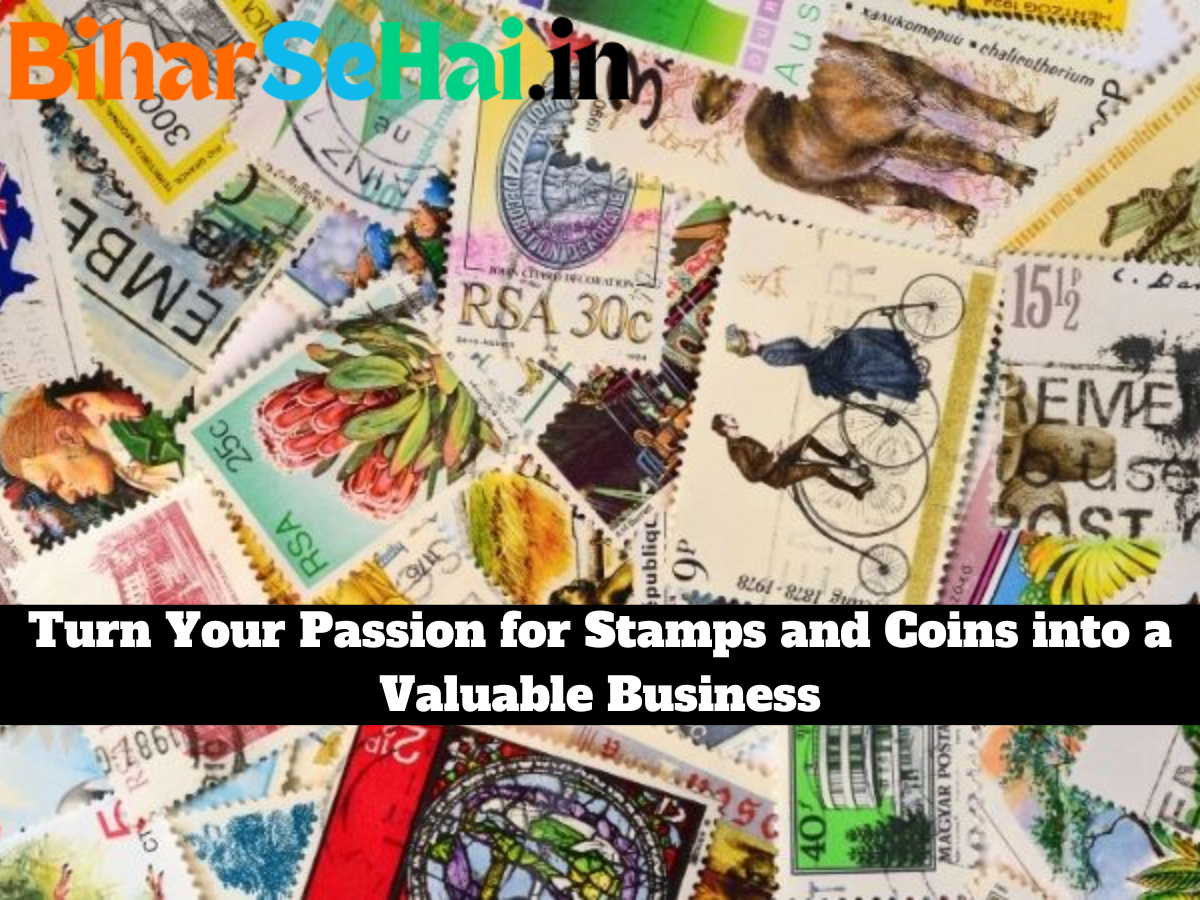Stamp and coin collecting is a fun hobby that can also be quite lucrative if you have the right knowledge and resources. Valuable stamps and coins are in high demand among collectors and investors, making the stamps and coins business a potentially profitable endeavor. This comprehensive guide covers everything you need to know to get started and succeed in the stamps and coins business.
Overview of the Lucrative Stamps and Coins Market
Stamp and coin collecting has been popular for over a century, driving an extensive marketplace for buying, selling, and trading these collectibles. Some rare stamps and coins sell for millions of dollars at auction. Even more common vintage stamps and coins can be worth hundreds or thousands of dollars if they are in mint condition. The potential to find hidden gems in old collections and sell them for profit is what makes stamps and coins so appealing as a business opportunity.
What Makes Stamps and Coins So Valuable
There are several key factors that determine the value and price of stamps and coins:
- Rarity – Stamps and coins with very low mintage numbers or that had limited circulation are more rare and valuable. Unique errors and misprints also add value.
- Age – Older vintage stamps and coins from the 19th century or early 20th century are more desirable to collectors than modern issues.
- Condition – Stamps and coins that are in pristine, mint condition with no damage or markings are exponentially more valuable.
- Historical significance – Stamps and coins related to important historical events or figures are more sought-after by collectors.
- Precious metals – The metallic content in gold, silver, platinum, and copper coins adds intrinsic value beyond the collectible value.
Most Expensive and Valuable Stamps and Coins
To get a sense of how lucrative the high end of the stamps and coins market can be, here are some examples of record-breaking pieces:
- The Treskilling Yellow stamp from Sweden is one of the rarest stamps in the world. It last sold in 1996 for $2.3 million at auction.
- The 1933 Double Eagle gold coin sold for over $7.5 million in 2002, the highest price ever paid for a coin. Only a few were printed before the design was canceled.
- The 1868 1c Z Grill stamp is one of only two in existence. It sold most recently in 1998 for $935,000.
- The Flowing Hair Silver Dollar from 1794 was the first U.S. dollar coin ever minted. One sold for over $10 million in 2013.
How to Get Started Collecting Stamps and Coins
The first step to succeeding in the stamps and coins business is educating yourself and starting your own collection. Here are some tips:
- Learn the lingo – Get familiar with key terms for identifying and grading stamps and coins so you can understand listings and descriptions.
- Study price guides – Review stamp and coin catalogs to gain knowledge about valuations for different types of collectibles.
- Decide your focus – Choose specific eras, categories, or themes to collect so your collection has parameters.
- Find a seller – Locate reputable dealers or auction houses that specialize in your collecting niche.
- Examine carefully – Inspect all stamps and coins closely before purchasing using a magnifier to spot any flaws or damage.
Essential Tools for Stamp and Coin Collecting
These basic tools will help you safely handle your collection:
- Stamp tongs – Allows you to grip stamps gently to avoid fingerprints and damage.
- Cotton gloves – Protect coins and stamps from skin oils and dirt.
- Magnifiers – Detect flaws not visible to the naked eye that can affect value. Get at least 10X magnification.
- Stock books – A album for neatly organizing and protecting your stamp collection.
- Coin folders – Clear sleeves to store coins in mint condition and view both sides.
- Supplies for mounting – Hinges, sleeves, albums pages to properly mount your collectibles.
How to Buy and Sell for Profit
Once you gain knowledge as a collector, you can start buying underpriced stamps and coins and re-selling at market value:
- Find hidden gems – Search estate sales, antique shops, flea markets for neglected collections.
- Buy below value – Verify the true market price, and only buy if the deal is below current value.
- Re-sell professionally – Clean or restore if needed, then photograph and list online or consign to an auction house.
- Time sales strategically – Research trends to see when certain collectibles are peaking in demand and value.
- Establish relationships – Get to know other dealers, collectors, auctioneers to find deals and buyers.
- Specialize your stock – Stick to your niche as much as possible to become an expert curator in that area.
Best Places to Buy and Sell Collectible Stamps and Coins
- Coin shows – These events bring together many dealers and collectors to buy, sell, and trade.
- Online marketplaces – Sites like eBay provide exposure to a huge network of buyers for your listings.
- Auction houses – Major houses like Christie’s and Sotheby’s auction high-value collections in catalogs and live bidding events.
- Stamp and coin stores – Brick and mortar shops with knowledgeable dealers who can give appraisals.
- Estate auctions – Look for auctions selling off collections from an entire estate for hidden gems.
- Collector clubs – Trading within a network of fellow collectors is safer than unknown sellers.
How Grading and Authentication Impacts Value
Reputable grading and authentication is crucial for validating the condition and provenance of high-value stamps and coins. Here’s how the process works:
- Professional grading – Services like PCGS and PSA grade coins and stamps on a numeric scale based on standardized criteria.
- Certificates of authenticity – Reputable dealers and third-parties like PSA/DNA provide certificates confirming the authenticity of collectibles.
- Provenance research – Auction houses and dealers investigate the origin and history of ownership of rare collectibles.
- Authentication – Techniques like engraving analysis determine whether a coin or stamp printing plate is genuine vs counterfeit.
- Slabbing – Encapsulating a coin or stamp in an acrylic holder seals and protects the item while displaying the grade.
Factors That Can Impact Value and Prices
Many elements contribute to fluctuations in the stamp and coin market:
- Rarity changes – New discoveries can increase supply of previously rare items while losses decrease it.
- Condition disparities – Subtle differences in grade make a huge impact on prices. A coin in AU vs BU condition could be thousands apart.
- Buyer competition – Prices rise when multiple motivated high-end buyers compete for a rare item at auction.
- Precious metal prices – The bullion value of gold, silver and other metals impact coin prices.
- Economy and investment trends – Collectibles markets are impacted by factors like inflation, tax policy, economic strength.
- Popular culture – Mainstream attention on collectibles can cause spikes in demand and valuations.
How to Spot Rare and Valuable Finds
With study and experience, you will be able to spot clues that indicate a stamp or coin is special:
- Unique defects – Misprints, miscuts, inverted designs, and misalignments often increase value for stamps and coins with errors.
- Special engravings – Look for rare die varieties of coins with unique engraving characteristics.
- Excellent condition – Condition should match the era, with older items showing less wear and fewer marks.
- Toning and color – Unique tone patterns add appeal. Stamps with original gum intact are preferred.
- Low mintage – Check production numbers. For coins, lower is usually better. For stamps, below 100k often raises value.
- History – Stamps/coins related to significant historical events or people have stories that add appeal.
How to Safely Store Your Valuable Collection
Take measures to protect your collection from damage, loss, or theft:
- Avoid direct light – UV exposure will fade colors, especially on stamps. Store in cabinets away from windows and sunlight.
- Control temperature and humidity – Heat and moisture speed up deterioration. Ideal conditions are around 70° F and 65% relative humidity.
- Use inert materials – Store stamps and coins in archival plastic, Mylar sleeves, acid-free paper. Avoid wood, rubber bands, and PVC.
- Handle with care – Always hold stamps by the edges with tongs. Handle coins in cotton gloves and over a soft surface.
- Separate and organize – Use slipcovers, mounts, or flips to separate items so they don’t rub together and get scratched.
- Secure valuables – Keep rare and high-value items in a safe deposit box or home safe.
How to Make Money Successfully in the Stamps and Coins Business
By following best practices in buying, selling, and operating your business, you can maximize your profits:
- Start small – Gain experience with affordable lower-risk inventory before investing in expensive rarities.
- Focus your niche – Becoming a specialist increases your perception as an expert.
- Provide great customer service – Fair prices, honest assessments, and reliability will earn you regular buyers.
- Keep overhead low – Avoid unnecessary expenses that cut into your margins.
- Utilize online sales – Expand your reach dramatically by embracing internet auctions and marketplaces.
- Promote strategically – Use social media and outreach to attract serious buyers and gain referrals.
With diligence and enthusiasm, you can absolutely turn your passion for stamp and coin collecting into a profitable business! Pay close attention to trends, study up on your specialty, and provide quality material to fellow collectors. The potential for high-value finds and sales is immense.

